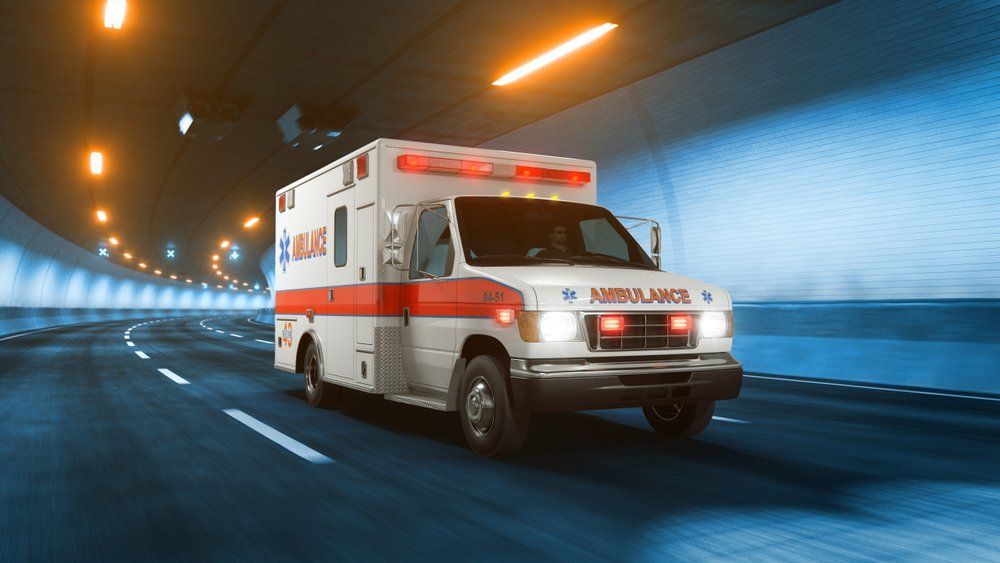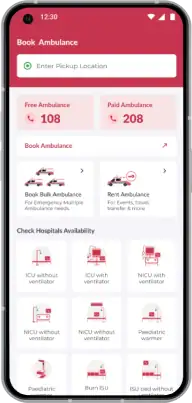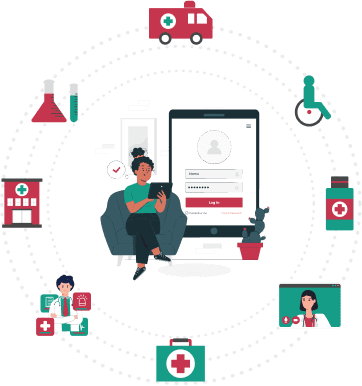When emergencies strike and medical help is needed urgently, ambulances become the lifeline that rushes to the rescue. Whether it's a sudden health crisis, an accidental fall or any critical situation, ambulances equipped with advanced medical gear play a pivotal role in saving lives. Have you ever wondered what equipment lies within these vehicles that respond swiftly to the brink of life?
Alongside robust batteries that power the ambulance, a range of essential tools are found in every ambulance:
1. ECG Monitor and Defibrillator:
During patient transportation, monitoring vital signs is paramount. An ECG monitor stands as the guard, ensuring continuous surveillance. It tracks crucial metrics, like heart rate and rhythm, enabling immediate intervention if deviations occur. In critical instances such as cardiac arrest, the defibrillator takes center stage. Its role is pivotal, stabilizing irregular heart rhythms through controlled electric shocks, effectively restarting the heart's normal beating pattern. This life-saving device acts as a lifeline, ready to revive the patient and restore vital functions. Together, the ECG monitor and defibrillator form a dynamic duo, safeguarding lives during transit and exemplifying the significance of cutting-edge medical technology.
2. Spinal Board:
A spine injury requires utmost care and a spinal board provides just that. It enables immobilization and safe transportation of patients suspected to have spine trauma. This equipment aids in lifting the patient during extrication or transit, particularly in challenging scenarios.
3. Bed or Stretcher Equipment:
Crucial for non-emergency ambulance service, this equipment facilitates the patient's journey from home to hospital and back. Patients with head or spinal injuries benefit from additional spinal support boards and collars.
4. Transport Ventilators:
For patients incapable of breathing independently, mechanical ventilators are paramount. They replace manual ventilation, ensuring consistent breathing support en route to the hospital.
5. Infusion Syringe Pumps:
These medical devices administer or withdraw fluids into or from the patient's body at a set flow rate and volume. They play a pivotal role in controlled fluid delivery.
6. Cot, Patient Shifting Rolls and Ambulance Chair:
Cots are indispensable in situations where patients cannot move due to their condition or risk worsening it with movement. For patients located at elevated levels within buildings, cots provide a secure means of transportation. Those with spinal injuries benefit from the added support of spinal boards and collars, ensuring their safety during transit. Patient shifting roles aid individuals who lack independent mobility, facilitating their comfortable movement. Moreover, the ambulance chair streamlines the journey from the patient's home to the ambulance, ensuring seamless and secure transportation. These essential equipment pieces enhance both patient comfort and safety, reflecting the commitment of modern ambulances to provide comprehensive and tailored care.
7. Nebulizer:
Nebulizers transform liquid medication into a mist for immediate relief, ensuring easy inhalation during transit to medical facilities, offering rapid comfort en route to the hospital.
8. Oxygen Supply Units:
A critical component, oxygen supply units aid fire victims, asthma patients and those needing revival. They provide life-sustaining oxygen during the crucial moments.
9. Sphygmomanometer:
To measure blood pressure, the sphygmomanometer is a standard tool. It helps gauge systolic and diastolic pressure, offering essential insights for patients requiring immediate medical attention.
10. Rescue Splints and Bandages:
These essentials find their place in every ambulance, enabling effective immobilization of fractured or sprained joints. They are simple yet impactful tools in enhancing patient comfort and stability.
Conclusion:
While the exact configuration might vary based on specialized ambulance services, these core devices are universal. Specialized ambulances catering to pediatric patients or specific medical needs may incorporate additional tools, showcasing the versatility of modern ambulance services.
In essence, non-emergency ambulances stand as crucial components of healthcare, offering swift and safe transit for patients requiring medical attention. The carefully curated equipment within these vehicles ensures that patients receive necessary care while en route to healthcare facilities. As technology evolves, these tools continue to save lives, underscoring the essential role of ambulances in modern healthcare systems.






